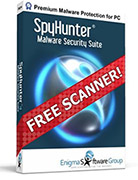Internet Security 2014 is a rogue anti virus program. This program pretends to be an anti virus client that finds viruses on computers. In reality it’s the virus program and the scan results this program gives off are false. All warning messages given off are false and not real.
To remove the virus threats you are asked to purchase Internet Security 2014. If you do purchase the program. The system does stop showing the virus messages. Just note that you are basically paying some crooks who just scammed you.
Manual Removal of Internet Security 2014 is not recommended as it may cause severe system damage. The simplest way to remove is to use an anti virus program that is known to work against this threat.
What Damage Is Being Done by Internet Security 2014?
In reality this program is not doing much damage. It’s just annoying and holding your computer for ransom till it is removed. Users will find they will have trouble surfing the web or running and installing programs on their computer. You can install an anti virus client while in safe mode with networking. Do a search online if you do not know how this is done.
Automatic Virus Removal
 SpyHunter is very user friendly, providing you with a simple interface that will allow you to properly understand the options and functions available. SpyHunter succeeds at both cleaning your already infected computer from viruses and to prevent virus infections in the future. Simply put IT WORKS!
SpyHunter is very user friendly, providing you with a simple interface that will allow you to properly understand the options and functions available. SpyHunter succeeds at both cleaning your already infected computer from viruses and to prevent virus infections in the future. Simply put IT WORKS!
Online Virus Removal Service
 Do you need Expert Help! PCNinja.com has experts standing by that can fully remove this virus from your computer. Based in the U.S.all repairs are down by certified computer repair experts. They have fixed thousands of computers over the years and RemoveVirus.org is proud to recommend this U.S. based company to service your computer. Visit http://www.pcninja.com or call 1-888-392-2785
Do you need Expert Help! PCNinja.com has experts standing by that can fully remove this virus from your computer. Based in the U.S.all repairs are down by certified computer repair experts. They have fixed thousands of computers over the years and RemoveVirus.org is proud to recommend this U.S. based company to service your computer. Visit http://www.pcninja.com or call 1-888-392-2785
8am-10pm PST
Internet Security 2014 Manual Removal Procedures
As already mentioned we do not recommend you manually remove this virus threat. Using an anti virus client is the best way other then having a pro remove the virus for you.
You will have to find and delete the main executable file for this virus. To make things harder to do this the makers have this trace be a random trace. So every computer user has a different file name.
- [random].exec ( Example is 6KJF55K4.EXE ) Your file trace will be named different.
Some Tips on Locating the file.
Known File Paths. To view these file paths you will need to either manually type them in or show hidden files and folders. Learn how to at
- C:\Documents and Settings\USER NAME\Local Settings\Application Data
Windows Vista/ Windows 7/ Windows 8:
- C:\ProgramData\
- C:\Users\Your Uer Name\AppData\
- C:\Users\Your Uer Name\AppData\local
- C:\Users\Your Uer Name\AppData\Roaming
A. Browse to the file location shown above. Sort the files by date and see if any of the file names match the date you where infected. Only a few files should be around the same date of the infection. From there you can re-name the file you believe is the virus and restart your computer. Once you have re-booted you can now delete that file.
While you may not know the exact name of the file here are a few tips to locate it.
A1. The file will not be named something that makes sense, it will be jumbled like 6CB5K4.EXE or something simple like 256544.exe
A2. You can sort the file by date in the folder and see which ones have been installed in the last few days. In most cases you will only have 1-3 files that match the time of your infection. From there it should be easy to see which one is the one you need to re-name.
B. Boot into Safe Mode with networking and download an Anti virus client and run a full scan. We like SpyHunter
C: Log-into another users account and see if you can delete the file. Again use the File Locations below to locate the file
D: Start the Task Manager the very second you login and terminate the process that way.
Once you have stopped the virus by deleting the main executable you can now use your computer again as normal. You will still have virus traces on your computer. It is important to run a full virus scan using an anti virus client to find out what these traces are.